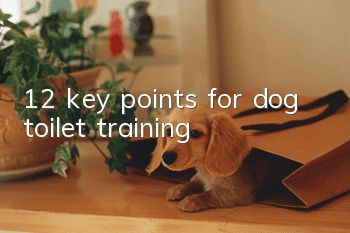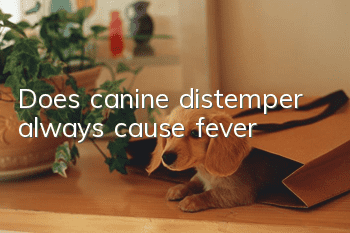12 key points for dog toilet training

To train a dog to go to the toilet at a fixed point, a better training method is to use "positive reinforcement", that is, a reward method to encourage the dog to go to the correct place to excrete.
1. Limit the scope of activities
Before the dog learns to use the "toilet", its range of activities at home should be limited to "short-term" or "long-term" restricted places. Places that are similar in size to dogs and have a small range of activities, such as pet boxes, are "short-term" restricted places. Do not keep your dog in a short-term confinement area for more than 3 hours.
In addition, we also need to prepare a "long-term" restricted place, which can be a larger balcony or bathroom, or a special area surrounded by a pet fence. If the owner will be away for more than 3 hours, keep the dog in a long-term restricted area. Place the pet crate in this area, open the pet crate door so the dog can enter and exit freely, and place a pet toilet near the pet crate.
2. Only “emptied” dogs can move freely
Only "emptied" dogs are allowed to move in "restricted places" at home.
3. Correctly arrange the location of the toilet
Dogs have the habit of not excreting in their own nests and daily living areas. Therefore, do not place the dog toilet in these places, but in places where it does not usually go, such as the owner's bathroom.
4. Use materials suitable for “toilet” bedding
All natural, highly absorbent surfaces are suitable for dogs to use as toilets, such as special dog diapers, newspapers, turf, soil, etc. In addition, you can also put some urine from other dogs on the bedding to induce the dog to urinate.
5. When the estimated excretion time comes, release the dog from the pet box and guide it to the toilet to urinate
Puppies generally have the need to urinate after getting up, before going to bed, after a full meal, after playing games, and after being excited. If you have already crate trained your dog, then things become very simple: put it in the crate and let it out after 2-3 hours. When it comes out of the pet box, it usually feels like defecating.
6. Training to listen to excretion commands
When the dog makes preparations for excretion, such as lowering its head to smell, turning in circles, etc., immediately give the command to urinate, such as "pee".
7. Stay relaxed
Dogs can only relieve themselves when they are relaxed. Therefore, the owner who takes him to the toilet must give him enough sense of security. Owners who often beat and scold their dogs are not suitable for this "important task".
8. Timely rewards
The dog should be rewarded immediately after excreting in the prescribed place.
9. How to deal with “mistakes”
If you later find that your dog has not excreted in the prescribed place, do not punish him, just clean it thoroughly. If you find that your dog is urinating in an "illegal" place, you should immediately interrupt it, say "No!" to it, and then move it to the designated place.
10. Expand the scope of activities
When the dog gets out of the pet box and can go to the toilet consciously, you can start to try to stop locking it in the pet box, but it must be under the supervision of the owner. Once it's time to go to the toilet, or if you notice signs of going to the toilet, guide your dog to the toilet immediately and give the command.
11. Consolidate achievements
Even if the dog is already proficient in going to the toilet in the prescribed place, it still needs to be rewarded from time to time to consolidate its achievements.
12. Clean the dog toilet promptly and thoroughly
Dogs don’t like to urinate in places that smell like their own urine. Therefore, every time your dog urinates, clean the dog toilet thoroughly and put on a clean diaper.
- How to train a husky to eat well and not fight for food?
- How to train a Bichon Frize? What should you pay attention to when training a Bichon Frize?
- Will dog lipoma disappear on its own?
- What substances do dogs need?
- What should I do if my teddy dog is afraid of cars? How to train a Teddy dog to ride in a car
- Age standards and breeding points for senior dogs
- Does an adult border collie recognize its owner?
- puppy breeds
- The most effective way to deal with diarrhea in dogs
- Will it happen if a dog eats lychee cores?



